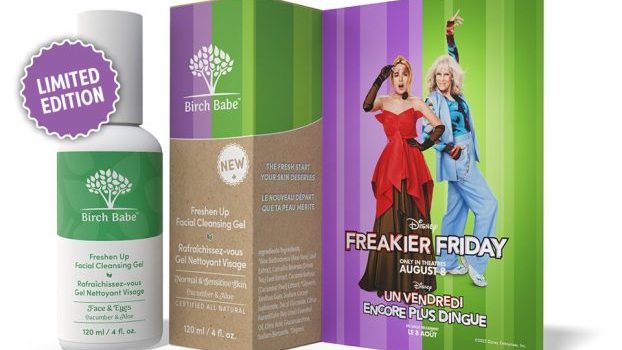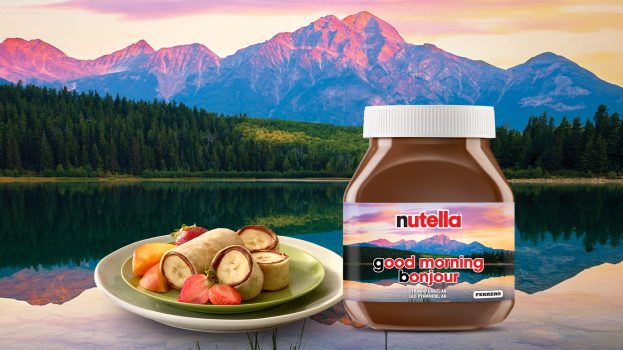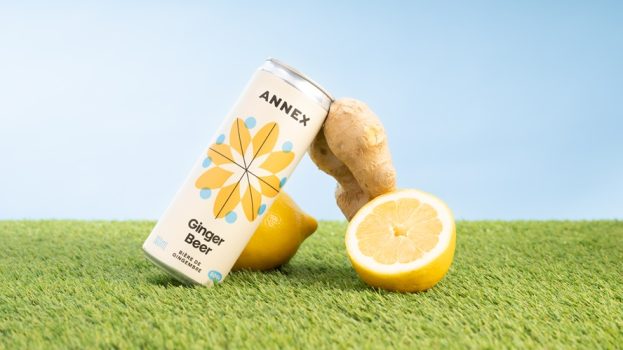
With its Tower of London sentinel guard logo, Beefeater gin is one of the most instantly recognizable spirits in the world. Now, the nearly 150-year old beverage is getting a shakeup with the Canadian launch of Beefeater Pink, a strawberry flavoured incarnation that taps into the growing demand for flavoured spirits.
Beefeater is marketed and distributed locally by Corby Spirit and Wine, and will promote its new label with a marketing campaign (by Deck Agency) that includes a heavy experiential component.
In-store, the brand is using the tag, “Rethink Your Summer Drink” and employing visual display takeovers to highlight the vivid colour and to emphasize cocktail pairings like frozen pink daiquiri and a variant on the gin and tonic, called a “pink and tonic.” The signage featured below is from Wine and Beyond in Alberta.
According to the Wine and Spirit Trade Association, sales of flavoured gin in the U.K. contributed to more than half of the gin category’s growth in 2018, despite only representing one fifth of total sales. Flavoured gins have proven themselves to be “Instagrammable,” according to U.K. insights, and brands Gordon and Bacardi have rolled out their own pink brand extensions (flavoured with juniper and rose, respectively) to tap into the trend. And for the launch of its own strawberry flavoured product in May 2018, Pernod Ricard rolled out scented ads at London’s Oxford Circus Tube station in the U.K.
Here at home, Spirits Canada data shows gin itself is inching its way up in terms of market share, from 5% in 2016, to 5.3% in 2017, to 5.7% in 2018 (vodka still owns 28.1%, the largest share, according to the latest figures).
 Jason Vanmali, Corby’s assistant brand manager, tells strategy that according to its research, gin is one of the three fastest-growing spirits behind Irish whiskey and tequila. Canadian consumers are demanding more variety and with Beefeater as the number three gin in Canada, the brand is aiming to jump on that trend and increase its market share (Bombay Sapphire is the top-selling gin in Canada, followed by Tanqueray).
Jason Vanmali, Corby’s assistant brand manager, tells strategy that according to its research, gin is one of the three fastest-growing spirits behind Irish whiskey and tequila. Canadian consumers are demanding more variety and with Beefeater as the number three gin in Canada, the brand is aiming to jump on that trend and increase its market share (Bombay Sapphire is the top-selling gin in Canada, followed by Tanqueray).
Vanmali says millennials are increasingly making gin their drink of choice, gravitating towards bolder brands and curious about trying new flavours within the category. He says its core consumer is young, urban consumers who are highly visual, which is reflected in the brand’s packaging and displays. The product comes in a flashy pink bottle, and the guard symbol has been shrunk down for a more modern feel.
 “This generation isn’t as concerned with heritage or doing product research, they are acting on visual impulse,” Vanmali says of the pink gin’s minimalist appeal. He says the brand “retained the integrity of the bottle packaging to ensure it is recognizably Beefeater,” but that it “injected some energy into the label design,” while keeping the glass bottle to show off its colour. According to Vanmali, pink also ties nicely into the classic cocktail revival and is on-trend with neighbouring categories like Rosé.
“This generation isn’t as concerned with heritage or doing product research, they are acting on visual impulse,” Vanmali says of the pink gin’s minimalist appeal. He says the brand “retained the integrity of the bottle packaging to ensure it is recognizably Beefeater,” but that it “injected some energy into the label design,” while keeping the glass bottle to show off its colour. According to Vanmali, pink also ties nicely into the classic cocktail revival and is on-trend with neighbouring categories like Rosé.
In addition, the company is also enlisting Master Distiller Desmond Payne to speak to the product’s taste profile particulars between May 21 and 23 in Toronto. Payne has three decades of distilling experience and was even recently appointed a member of the Order of the British Empire for his contributions to developing the spirit. He was approached by the brand to talk about world gin trends and the inspiration for Beefeater Pink, which go back to the company founder’s experimentation with berries.























